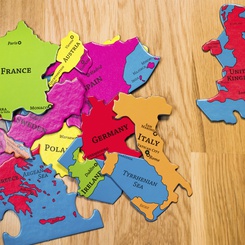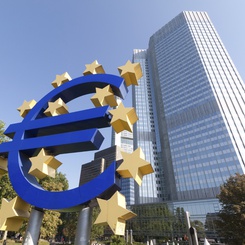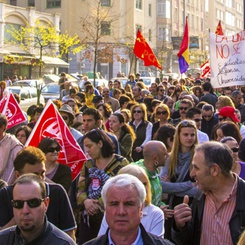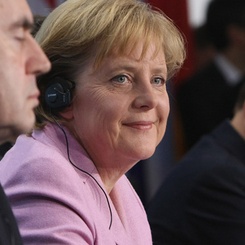From the paper “The Legal Grounds of Irregular Migration: A Global Game Approach”, by Claire Naiditch and Radu Vranceanu, in BE Journal of Economic Policy Analysis, March 2017.
___
Over the past four years, the European Union has been confronted with massive immigrant inflows, mainly from Syria and Afghanistan, but also from Africa (Eritrea, Nigeria...). According to the International Organization for Migration (IOM), more than one million migrants crossed into Europe in 2015, compared with just 280,000 the year before. In 2016, the organization recorded 390,000 arrivals. However, exact numbers are hard to gauge since some may have crossed into Europe undetected.
This massive immigration phenomenon clearly took the European Commission and the governments of the EU member countries by surprise: After much delay, the EU finally agreed on the European Agenda on Migration in May, 2015. In September 2015, the EC adopted a "temporary relocation plan" targeting the 160,000 asylum applicants who were in Greece and Italy at that time. In July of the same year, a resettlement agreement for persons clearly requiring international protection was also approved. However, this plan was met with strong opposition from the Visegrad group and was never applied in its original framework. Even migrants have appeared reluctant to comply with EU regulation, flooding Germany and the UK while seeming to avoid other large countries like France, which are equally able to welcome them.
Gradually the EU migrant phenomenon has gone from an issue of regular migration, to a problem of irregular migration. According the IOM, irregular migrants “enter, stay, or work in a country without the necessary authorization or documents required under immigration regulations". Indeed, most migrants entering the EU today are arriving irregularly: they are arriving without the approval of the national authorities while trying to avoid detection. The EU has struggled to deal with the migrant crisis in part because irregular migration is more difficult to address using the standard tools of migratory policy likr quotas, visas, and work permits.
The perception of an “out of control” situation is causing obvious strain in Europe: Brexit was to a large extent fuelled by fears of “uncontrolled” immigration. Meanwhile, worrisome populist political movements have been gaining momentum in many EU countries, surfing on the same fears and conveying an aggressive anti-immigration message.
How do Irregular Migrants Choose their Destination Country?
Empirical studies have shown that the probability of preferring one country over another is related to the economic development, geography, culture, and institutional framework of the migrant’s destination and origin country. Several recent papers have focused on the migration network, defined as “the global influence exerted by migrants at destination on the flows of newcomers from their origin country” (Beine 2013). More generally, in economics we speak of a network effect when the consumption of a good or service by a person increases the value of this good for all other consumers.
Unlike other studies that focus on the consequences of networks on the decision to migrate, our theoretical analysis "The Legal Grounds of Irregular Migration: A Global Game Approach" focuses on the network creation process. A potential migrant will choose a country only if he or she feels that other people will make the same choice. Thus his "beliefs" about the action of others must be part of the solution to our problem.
The paper builds on a simple coordination game with strategic complementarities: the payoff from migration is positive only if a critical mass of migrants, both regular and irregular, has reached the destination country. The plausible hypothesis is that potential migrants receive "heterogeneous" information about the economic fundamentals of the country of destination. This information is on average correct, but differs slightly from one individual to another. The information is thus "noisy". Beliefs are no longer identical for everyone, and so the problem can be analyzed as a classic "global game" as it was introduced by Carlsson and Van Damme (1993) and Morris and Shin (1998, 2001). In most global games, economic agents adopt an equilibrium "switching strategy", taking one course of action if they receive a signal above a critical threshold, and another course of action if the signal is below the critical threshold.
Solving the model for the equilibrium strategies shows that simply tying the number of regular migrants to the economic outlook of a country can precipitate large discontinuities in the inflows of irregular migrants. The tipping point between what makes a country attractive / unattractive for massive irregular migration depends on just small variations in variables like the state of the economy or the quota of legal migration. This positive / negative amplification mechanism results from the “trivial” income effect compounding its action with the network effect, which is the consequence of the threshold equilibrium. The higher the precision of the signals, the stronger the discontinuities in the migration flows.
What Policy Implications for the EU?
When deciding how many regular migrants (asylum seekers or refugees) it allocates to each country, the European Commission should take into account the indirect consequences of this policy on the number of irregular migrants a country will attract.
For countries with strong economic outlooks, the European Commission should provide material support beyond the support needed for just the regular migrants only, taking into account the surge of irregular immigration they will also likely receive.
In countries with a modest economic outlooks, high irregular migration may be the outcome of high noise in the signals; the EU could therefore also finance information campaigns in migrants’ origin countries, informing them about the true conditions of irregular migrants in the destination country, and encouraging them to follow only the regular channels to migration.
References:
- Beine, M. 2013. “The Network Effect in International Migration.” CESifo DICE Report 1/2013 (March).
- Carlsson, H., and E. Van Damme. 1993. “Global Games and Equilibrium Selection.” Econometrica 61 (5 ), pp. 989–1018.
- Morris, S., and H. S. Shin. 1998. “Unique Equilibrium in a Model of Self-Fulfilling Currency Attacks.” American Economic Review 88 (3), pp. 587–597.
- Morris, S., and H. S. Shin. 2001, Rethinking Multiple Equilibria in Macroeconomic Modeling. NBER Macroeconomics Annual 2000 VOL 15, pp. 139–161.









